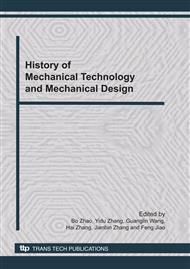p.77
p.82
p.86
p.91
p.95
p.100
p.104
p.110
p.114
Research of Rolling Mill Friction Quivering Properties Based on the Rolling Interface
Abstract:
In order to find the vibration source of a rolling mill, the dynamical characteristic of friction of the rolling interface was analyzed. Characteristic between friction coefficient and rolling speed has been gotten based on test. It is shown the friction or friction coefficient of rolling interface declined sharply with the rolling speed variety in some time. By the comparison test on the spot, it is shown that closing emulsion is conducive to vibration suppression. A lateral friction roller flutter model was established. According to the model numerical analysis, it is shown that when the external disturbance forces being smaller the system showed an almost periodic motion, while a chaotic ones when the external disturbance forces being bigger. Moreover, with the change in external disturbance force roll amplitude bifurcation was occurred. That is to say, reducing the rate and frequency of exciting force will improve the stability of the system dynamics.
Info:
Periodical:
Pages:
95-99
Citation:
Online since:
November 2010
Authors:
Keywords:
Price:
Сopyright:
© 2011 Trans Tech Publications Ltd. All Rights Reserved
Share:
Citation:


